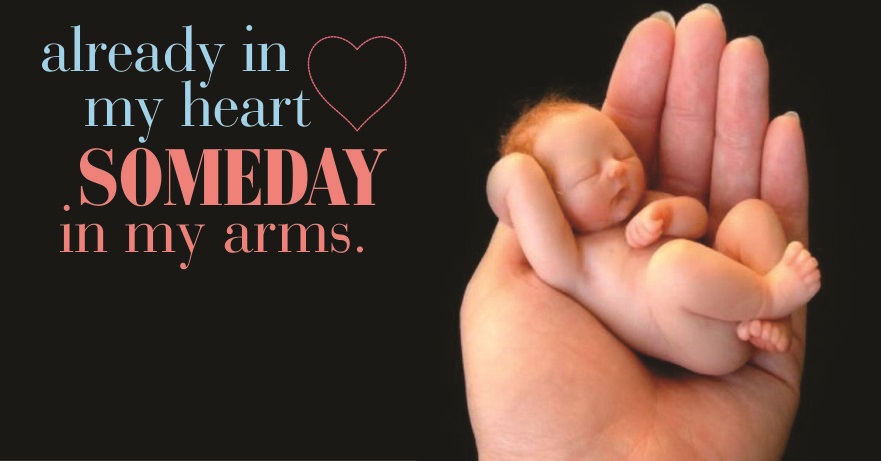No More Baby Blues: Female Infertility and its Ayurvedic Management

Just as mature trees in the orchard can produce the best quality fruit, the female body can produce high quality eggs in its mature years. All that is needed is the right nutrients and a hospitable environment in the body and the womb.
It is a commonly held belief that career women who have delayed having children into their 30s or 40s have greater difficulty conceiving. The media is certainly full of apocalyptic stories about women leaving motherhood too late. Ayurvedic medicine, the oldest and most intelligent mind-body systems of healing has the answers. The Charaka Samhita, the original texts Ayurveda states that provided optimum conditions are created, the female body is capable of conceiving and carrying a child at any age up to menopause.
Factors required for Fertility in Females
In females, regular menstrual cycles are the first and foremost thing that is an indicator to her fertility potential. A regular menstrual cycle should have an interval between 21-35 days, with average cycle length of about 28 days, the upper limit of blood loss in a normal menstruation is considered as 80 ml and the number of bleeding days may vary from 2-7 days. A normal menstrual cycle indicates that the hypothalamo-pituitary-ovarian axis is well coordinated, resulting in regular ovulation, the endometrium (inner mucosal lining of the uterus) is responsive to the ovarian hormones which enables the cycle of endometrial shedding which results in menstruation as well as the regeneration process which is very much essential for implanting a fertilized ovum and that the outflow tract is patent.
Ovulatory Dysfunction
Oligo-ovulation or anovulation – results in infertility because no oocyte will be released monthly. In the absence of an oocyte, there is no opportunity for fertilization and pregnancy. This accounts for the most common cause of female infertility. Ovulatory disorders can be broadly classified as:
- Hypothalamic amenorrhea or functional hypothalamic amenorrhea (FHA) (Hypogonadotropic hypogonadal anovulation). FHA is associated with eating disorders and excessive exercise which results in elevated cortisol, which causes a suppression of GnRH from hypothalamus, which in turn results in a decrease in follicle-stimulating hormone (FSH), and luteinizing hormone (LH) from the anterior pituitary gland. These result in abnormal follicle growth, anovulation, and low oestrogen levels
- Ormogonadotropic normoestrogenic anovulation: most common type is polycystic ovarian syndrome (PCOS). PCOS accounts for 80 to 85% of ovulatory dysfunction and affects 8% of all reproductive-aged females.
- Premature ovarian failure ie, Hypergonadotropic hypoestrogenic anovulation (POI): is defined as menopause before the age of 40. This disease is characterized by a lack of adequate number of follicles for ovulation, a decrease in estrogen, loss of oocytes, and infertility. The most common cause of POI is Turner syndrome, monosomy of the sex chromosomes leading to a 45X karyotype. Smoking, autoimmune disorders, chemotherapy can all lead to POI. There can be menopausal symptoms like vaginal dryness, hot flashes, loss of libido etc.
Tubal Disease
Tubal damage or obstruction can be due to upper genital tract infections, genital tuberculosis, or from other causes of pelvic peritonitis like a ruptured appendicitis. This shows the importance of treating infective vaginal discharges as they can ascend to the upper genital tract organs and cause endometritis and tubal damage. Tubal damage can lead to ectopic pregnancy and infertility if there is bilateral tubal block. This is also one of the major reasons for IVF (In-vitro Fertilization)
Uterine Factors
Uterine causes of infertility are associated with either space-occupying lesions or reduced endometrial receptivity. Submucous fibroids (within the uterine cavity) may impair implantation. Congenital uterine abnormalities like septate uterus are associated with infertility and recurrent pregnancy loss. Thin endometrium is also a reason for implantation failure and cancellation of many IVF cycles.
Cervical Factors
This can be due to hostile cervical mucous resulting in impaired sperm penetration to the uterine cavity or antisperm antibodies immobilizing spermatozoa. There can be anatomical defects as well leading to infertility.
Pelvic Endometriosis
Endometriosis is the presence of endometrial tissue outside the uterine cavity. Adenomyosis is presence of endometrial tissue in the muscle layer of the uterus. It is evidenced by painful menstrual cycles, painful coitus and infertility in advanced cases. It affects 10% to 15% of reproductive-age women. Of women with endometriosis, 40% to 50% will experience infertility. The inflammation impairs ovarian and tubal function resulting in defective follicular formation, fertilization, and implantation. It is also associated with pelvic adhesions and/or masses that distort pelvic anatomy which will inherently impair tubal motility, oocyte release, and sperm motility. The advanced stages of endometriosis have poor outcomes in modern medicine even with Artificial Reproductive Techniques.
Ayurvedic Management
Ayurveda considers infertility as “Vandhyatwa” and it is said to arise as a result of uncorrected menstrual disorders, untreated disorders of genital tract, as well as due to psychological factors. Ayurveda has a holistic approach towards fertility. Both physical and psychological aspects of the partners are given importance for optimal fertility. Females are advised to follow certain diet and regimen right from the onset of menarche and it has to be continued in each menstrual cycle which ensures that the hormonal balance required for healthy ovulation and preparation of the endometrium for conception is maintained. Couples planning for conception are advised to follow specific diet and regimen called as “Garbhadhana Vidhi” which prepares them at a physical, psychological and spiritual level for a healthy progeny.
Principles of Management
Ayurveda considers three doshas (Vata, Pitta and Kapha) and seven dhatus (rasa, rakta, mamsa, medas, asthi, majja and shukra) in the management of any disease. A balance of tridoshas and excellence of the seven dhatus are necessary for fertility as the reproductive tissues are represented by the last dhatu which is the shukra dhatu.
Menstruation and Ovulation are considered as “Agneya” in Ayurveda which means diet and regimen which increases the metabolism at a cellular level will maintain normalcy of menstrual cycles. Excess use of these agneya dravyas ie, hot potency drugs can lead to prolonged menstrual cycles with heavy bleeding. Based on the chronicity of menstrual irregularities/ infertility and based on the strength of the etiological factors as well as the extent of involvement of Tridoshas, three stages of management are adopted.
“Tatra alpe langhanam pathyam, madhye langhana pacanam, prabhute sodhanam”
If there are only minor aberrations, then correcting lifestyle and regular exercise will correct the problems. In the next stage, lifestyle changes as well as medicines will be required. If the disease process is very severe then purificatory Panchakarma treatments becomes necessary along with internal medicines.
Female infertility due to any of the above causes can be managed well with Ayurveda. Diet, regimen, medicines and panchakarma treatments help in achieving conception based on the cause and chronicity of the problem.
Our OBG-Gynaecology experts at I-AIM Healthcare Center have produced successful outcomes in treating female infertility cases. Call us now to know more and book your appointments with us.



